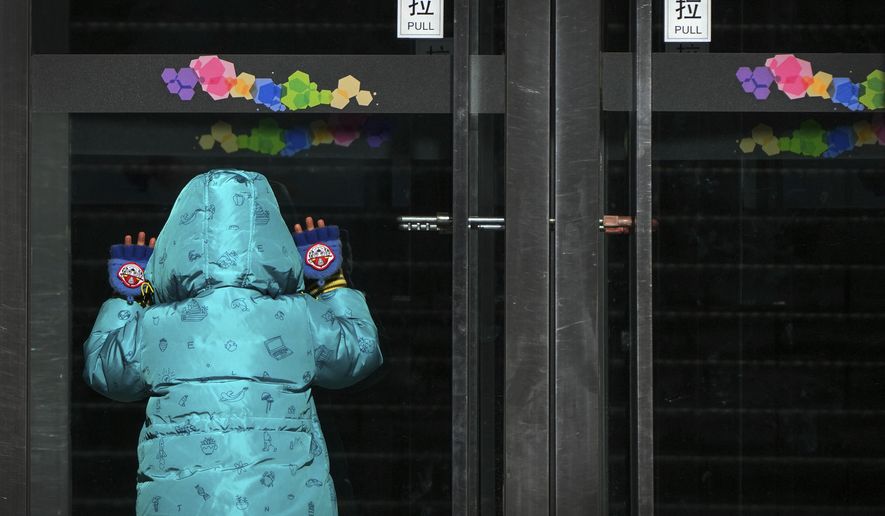China’s failure to develop coronavirus vaccines that work has resulted in societal chaos gripping many Chinese cities amid draconian lockdowns.
Beijing’s reasoning for the lockdowns has been to prevent the spread of COVID-19 through the unvaccinated populace, but analysts say the Chinese Communist Party has embraced the lockdowns to control the masses during the politically sensitive months surrounding the party congress in October.
International health experts say China’s weak vaccines and refusal to allow the use of effective Western-designed mRNA vaccines are coursing beneath the crisis.
Protests calling for an end to authoritarian rule in China and the resignation of Chinese President Xi Jinping have put Beijing in a pressure cooker.
Beijing has accused protesters of working for “foreign forces,” a reference to long-running complaints by CCP officials that Washington and other Western governments are trying to sabotage China’s economic and political rise as a global power.
At a minimum, the spread of video footage showing widening clashes between protesters and riot police is putting pressure on Mr. Xi to shift away from his zero-COVID policy. That move could be disastrous, given data suggesting that COVID-19 cases would surge.
On Wednesday, the Chinese National Health Commission reported 37,828 new cases over 24 hours, including 33,540 without symptoms.
As many as 2.1 million people could be at risk of death if Mr. Xi lifts the zero-COVID policy with the low vaccination rates and the lack of hybrid immunity within the Chinese populace, according to the London-based health analytics firm Airfinity.
“Mainland China has very low levels of immunity across its population,” according to an analysis that Airfirnity circulated this week. “Its citizens were vaccinated with domestically produced jabs Sinovac and Sinopharm, which have been proven to have significantly lower efficacy and provide less protection against infection and death.”
Political pressure has given Chinese authorities few options. Reuters reported that the giant cities of Guangzhou and Chongqing eased lockdowns Wednesday, a day after demonstrators in southern Guangzhou clashed with riot police.
The news agency’s Hong Kong bureau reported Thursday that Chinese authorities would announce an easing of COVID-19 quarantine protocols in the coming days and a reduction in mass testing, a marked shift in policy.
The National Health Commission acknowledged the depth of public anger during a press briefing Tuesday. A Xinhua News Agency account quoted a commission spokesman as saying, “Excessive control measures should be continuously rectified, and the reasonable requests of the people should be responded to and addressed in a timely manner.”
Mr. Xi announced the zero-COVID policy in 2020 as a mass campaign backed by the ruling Communist Party. The idea behind the policy was that China would use its strong state apparatus to eliminate all forms of the virus that have spread through the country’s 1.4 billion people.
Although China’s death and infection rates have been lower than those of other major countries, including the U.S., global health experts say Beijing’s approach is unsustainable because it has triggered public outrage and mounting domestic economic woes.
The country’s low vaccination rate has the potential to widen the health crisis.
“Unfortunately, the vaccines in China were not very good,” Paul Hunter, a professor of medicine at Britain’s University of East Anglia, told The Guardian newspaper. He said the vaccination levels of China’s most vulnerable people are low and much of the immunization from Chinese vaccinations has faded.
In the meantime, other world powers are calling on China to allow the import of Western vaccines.
Steffen Hebestreit, chief spokesman for the German government, told reporters this week that Berlin had “taken note” of the protests in China and “reports about partly violent actions of the [Chinese] security forces against the demonstrators.”
Mr. Hebestreit suggested that Beijing should address concerns about its COVID-19 policies by using mRNA vaccines produced by Western pharmaceutical companies BioNTech/Pfizer and Moderna, according to a report by Politico. He noted that the mRNA vaccines have let most countries abandon most of their coronavirus restrictions.
While international debate swirls around the question of how the CCP will respond to the crisis, some analysts predict more repressive policies.
David O. Shullman, a former U.S. intelligence official currently heading the Global China Hub at the Atlantic Council in Washington, said public protests in China are common but the current dynamics are noteworthy for a few reasons.
“It is the size and geographic spread of unrest across multiple cities emerging from a shared frustration with a central government policy — in this case, strict measures — and instances of broader anger at the government and at Xi Jinping himself that are highly unusual and no doubt concerning for Xi and other leaders,” Mr. Shullman said in comments circulated to reporters this week.
“This does not mean we are witnessing the beginning of the end of the Communist Party. But the question now becomes whether the playbook of a relatively restrained police crackdown, stepped-up propaganda and censorship efforts, and selective arrests employed thus far will be effective in quelling protests,” he said.
“If unrest grows, with tens of thousands protesting across major cities, it is not implausible that Xi may step up use of China’s internal security apparatus — including the [People’s Armed Police] — to restore order and to head off the sort of internal factional leadership challenge … in ways almost certain to involve significant casualties,” Mr. Shullman said. “Beyond the potentially awful human toll, this result would likely set the groundwork for even more repressive policies across the board as the party-state’s rule becomes more brittle and reliant on the threat of brute force and information control to maintain power.”
• Bill Gertz contributed to this story.
For more information, visit The Washington Times COVID-19 resource page.
• Guy Taylor can be reached at gtaylor@washingtontimes.com.




Please read our comment policy before commenting.